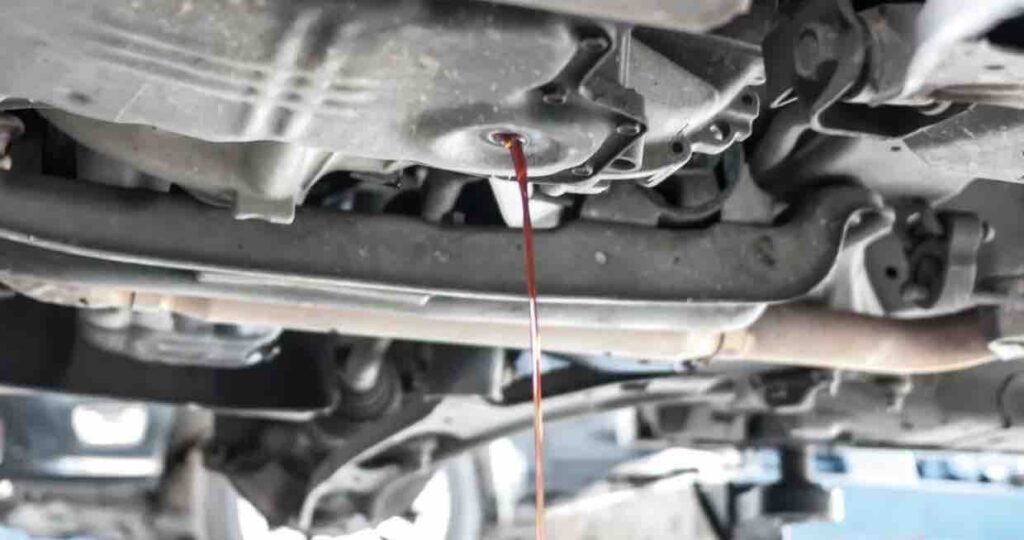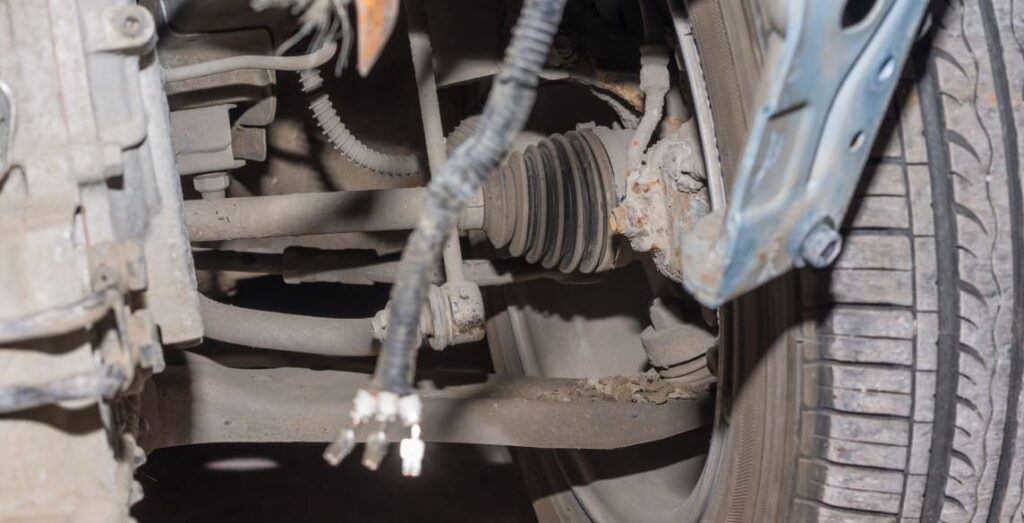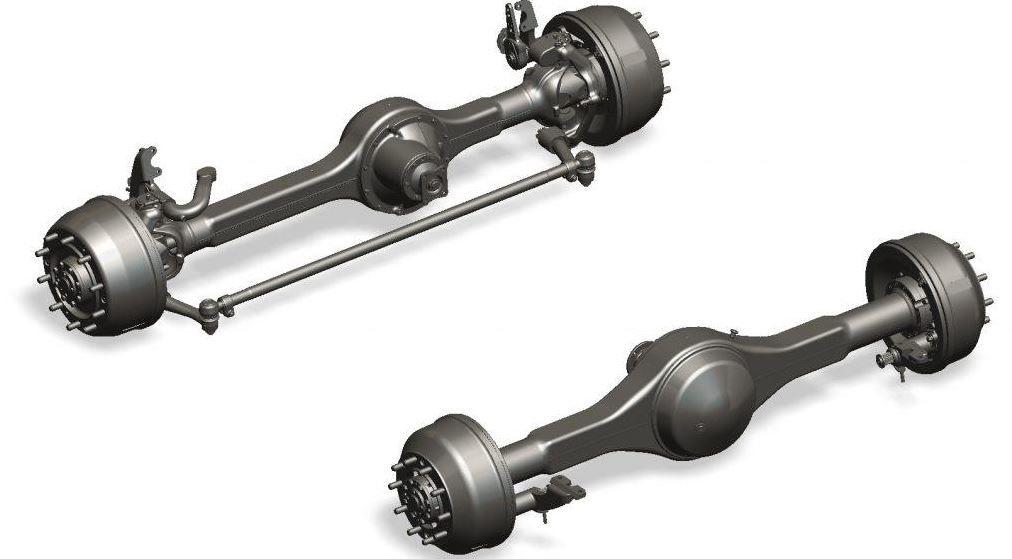Last updated on January 18th, 2023 at 05:19 pm
How Long Does it Take to Fix a Transmission Leak, and how Serious Is It? let’s consider all that in today’s post. Transmission systems in mechanical systems are so important that any issues render such systems almost non-functional or bring them to a stop completely. Furthermore, transmission system problems in automobile systems give rise to safety concerns, hence why they can put vehicles to a halt.

Therefore, drivers or users of such mechanical systems with transmission problems are advised not to engage in such systems unless the transmission system has been fixed. The transmission system of your automobile is very important, and your vehicle will not function properly if the transmission system develops a major problem. Related: Why Is Transmission Fluid Leaking From Bell Housing, In Front & Flywheel?
What Are Transmission Systems?
Transmission systems are the parts of an automobile that convert the power generated by the engine into mechanical energy, hence changing engine RPM into vehicle speed. The transmission system makes it possible to change gears, make sharp turns, and accelerate without jolting or stalling your car.
The transmission system is the system that enables the engine, clutch, and gears to work in tandem to get the power from the engine to the wheels. There are many complex mechanisms to ensure these systems are working, so it is important to check them regularly.
In addition, transmission systems need to be monitored while running continuously for maximum efficiency. There are broadly two main types of transmissions: Automatic and Manual transmission systems.
Keynote
The driver of a manual transmission must pick the appropriate gear and engage or release the clutch. Next, the engine engages and disengages from the transmission using a flywheel, pressure plate, and clutch.
The engine is connected to the flywheel and pressure plate. The clutch is splined to the transmission input shaft and sandwiched between them. The expression “push in the clutch” refers to disengaging the clutch from the engine by releasing the pressure plate. Therefore, Whenever you make a shift, you must first engage the clutch.
Automatic Transmission System, What is it?
Automatic transmission systems are designed to allow an operator of a vehicle to change gears within the vehicle without using the clutch pedal. An automatic transmission system can be either fully automatic or partially automatic, depending on how many of the gears are not changed by the operator.
A typical automatic transmission system consists of several components, some of which are:
- Automatic Transmission Fluid: The fluid that lubricates and cools the various parts of the transmission system. The fluid also helps to transfer power from one part of the transmission to another.
- Automatic Transmission Controls: The controls control which gear is engaged at any given time, depending on speed and throttle position. There are typically multiple settings for different gears, allowing for several different “gears” within one gear range. The controls also monitor systems like throttle position and vehicle speed and engage certain safety measures to exceed safe parameters.
- Automatic Transmission Computer: This is a computerized device that monitors input from sensors around the transmission and input from other car parts (like engine temperature). It also makes decisions about changing gear based on those inputs. It also monitors various components (like fluid temperature) and takes maintenance actions based on those inputs.
Manual Transmission System, What is it?
The Manual transmission system is geared that allow for a mechanical connection between the engine and wheels. The major difference between manual and automatic transmission systems lies in the control mode.
Automatic control mode allows the driver to change gears by pulling or pushing a lever or pedal, while manual control mode requires that the driver select gears by directly operating the clutch and shift mechanism by hand.
The driver changes gears when it is necessary to do so to maintain speed or power output. The Manual transmission system consists of several major parts, some of which are: Transmission, Driveshaft, Final Drive, Propeller Shaft, And Propeller Shaft Universal Joint.
What is a Transmission Leak
A transmission leak occurs when a car has a problem in the transmission system. The transmission fluid in a car is an important component in a car’s performance and how it runs.
The transmission fluid lubricates the moving parts of the transmission system, allowing them to move without friction and ease. It also helps to cool down these components, ensuring they do not overheat and get damaged.
The transmission fluid is usually red or black (or both) and is part of the automobile’s oil system. Your vehicle’s owner’s manual will tell you exactly how much transmission fluid you need to add to your car.
Keynote:
When an automobile’s transmission fluid is leaking, it means that one or more of the automobile transmission system’s seals has failed and is allowing fluid out of the transmission system onto the floor of the automobile.
This can cause problems with the entire automobile, including poor performance, excessive noise coming from the engine, and fuel consumption. A transmission leak can cause major damage to your transmission system if the leakage is not fixed as soon as possible. Transmission leaks can cause problems like:
- Transmission overheat
- Transmission fluid Smelling burnt
- Transmission slips or becomes hard to shift
What Causes Transmission Fluid To Leak?
Transmission leaks can be caused by several factors or occurrences in your automobile, sometimes even without you knowing about them until you have a leaky transmission system with the transmission fluid flowing to several areas of your car.
One of the leading causes of transmission fluid leak is the wear out of seals. The seals are the parts that prevent the transmission fluid from leaking out. Unfortunately, the transmission fluid leaks from the seals wear out from use.
Another cause of transmission leak is a broken or loose transmission line. The transmission line connects the hydraulic pump to the transmission valve body and driveshaft. The drive shaft transmits power from the front wheels to the rear wheels. If there is a problem with this system, it may cause leaks in the transmission fluid.
How Serious Is A Transmission Leak?
Transmission leaks are serious issues in automobiles in most cases. Hence you should not just wave off a transmission leak you notice in your car. Transmission fluid leaks must be addressed immediately because the transmission relies on the fluid to function properly.
Therefore, if you feel any loss of transmission fluid, stop driving your vehicle right away and have this issue professionally diagnosed by a certified mechanic immediately, especially if there is any sign of smoke or smell coming from the transmission area.
Keynote:
A leaking transmission can spell disaster for your car. Transmission fluid, commonly known as transmission oil, lubricates and protects transmission parts in the same way as motor oil does for other engine elements. Low fluid levels might harm the transmission’s performance and destroy critical parts if you leak.
The transmission fluid is normally red to dark crimson, although it might be pink if there is a serious problem. Transmission leaks can be caused by four different things, according to Accurate Auto.
A transmission leak can lead to complete damage to the transmission system in a case where the majority of all of the transmission fluid in your automobile has leaked away.
Where Does Transmission Fluid Leak From
The transmission system is complex, just as your entire automobile. Hence there are several places where transmission fluid can leak from. Therefore, to repair your transmission system, the first thing to do is find where the fluid is leaking from if you have a leaking transmission. Some of the places where fluid leaks from are:
- Underneath your car on the ground, the transmission has a pan underneath it, and sometimes it fluid will leak from this pan.
- Transmission fluid sometimes leaks from the transmission itself.
- Fluid can leak from the transmission pipes of the transmission system.
A gap in your transmission is one of the most common causes of a transmission fluid leak. Unfortunately, it’s difficult to pinpoint because the space could be in a pan gasket, torque converter, fluid lines, transmission pan, or seals. It can be not easy to narrow down, so have your vehicle inspected by a mechanic.
Keynote:
You must leak repaired when you see transmission fluid in your driveway, even if it is only a tiny amount. If nothing is done about it, the problem will worsen over time. If the leak is not repaired, the transmission will eventually fail. A tiny leak is easier to repair than a larger one, so get it corrected before it worsens.
How much does it cost to fix a transmission leak?
Fixing a leaking transmission system can be tricky sometimes in terms of cost. This is so because the cost of fixing transmission leaks is dependent on which part of the transmission system has the leak problem.
The costs for fixing a faulty transmission system vary widely depending on the leak and what caused it. Leaks in the torque converter and the pan gasket can cost up to $1,200; leaks in other parts can cost $2,000. Transmission repair shops will charge anywhere from $100 to $800 for diagnostics alone.
How long does it take to fix leaking transmission system?
The time taken to fix faulty transmission systems again depends on the part that leaks. However, a general rule of thumb is that a transmission system should be fixed immediately if it begins to leak.
A leaking transmission system can cause other problems in the car. This is why getting the problem fixed as soon as possible is important. Therefore, fixing your leaking transmission system can take some hours to a day and run into months, depending on the severity of the leak problem.
How to check transmission fluid without dipstick
It is essential to check for your transmission fluid level to damage your transmission system from insufficient fluid and overheating. This check is normally done using the dipstick. But if you decide not to use the dipstick, you do not have many options to check with. Some ways to check for fluid level without the dipstick are:
- You can check the transmission fluid by sticking your head up the pan, which is not advisable. Checking for fluid level by looking would not give you the condition of the fluid inside as you can only but look at the surface of the fluid. It also means that you would always have to open the pan cover to check for fluid level.
- You can use a magnetic “tester” tool to check for fluid levels. You can do this by placing the tool on the metal part of the transmission, and it will stick onto it, then you just read off the fluid level. However, this method is not as accurate as the other methods because the reading may be off by a couple of quarts.
How to fix a transmission leak?
Fixing a transmission leak requires professional handling as it is not what you would dabble and how to avoid further damage to the system. Fixing of transmission leak depends on the type of leak. Some leaks are easy to fix, while others require an expert to handle them compulsorily. Some fluid leakage fixes depending on where the leakage comes from, are:
1. Replacing Fluid Lines
This fix is done if the leak on the system is coming from the fluid line pipes or pressurized Cooper line.
2. Replace the Gasket
This requires changing of the transmission pan gasket. It is probably the easiest transmission leak fix. This is done if the source of the leak is the gasket of the transmission system.
3. Replacing The Pan
If the leak is from the transmission pan due to damage, then you need to replace the pan. You can buy a new one from the equipment store and fix it by bolting the new pan to its seating.
4. Installing New Seals
If your transmission system seal is the source of the leak, you need to replace the seal by installing a new one, and ensure the new seal is fitted correctly.
5. Installing New Drain Plugs or Pan Bolts
Worn-out plugs and pan bolts could sometimes cause leaks in a transmission system; hence if this is the case, you need to replace such worn-out plugs and pan bolts by installing new ones.
Conclusion
Transmission systems are very important in automobile systems. Hence you should always check and ensure that the transmission system has no leaks to avoid damage to the automobile and the transmission system. Related Article: Causes of transmission problems after CV joint replacement

Hi dear, I am Dennis Gift, an autobody repair technician with over 4 years of experience; and I love everything about fitness and cars and researching and sharing my experience. And this is where I get to do that freely without reservations. So come along with me.



